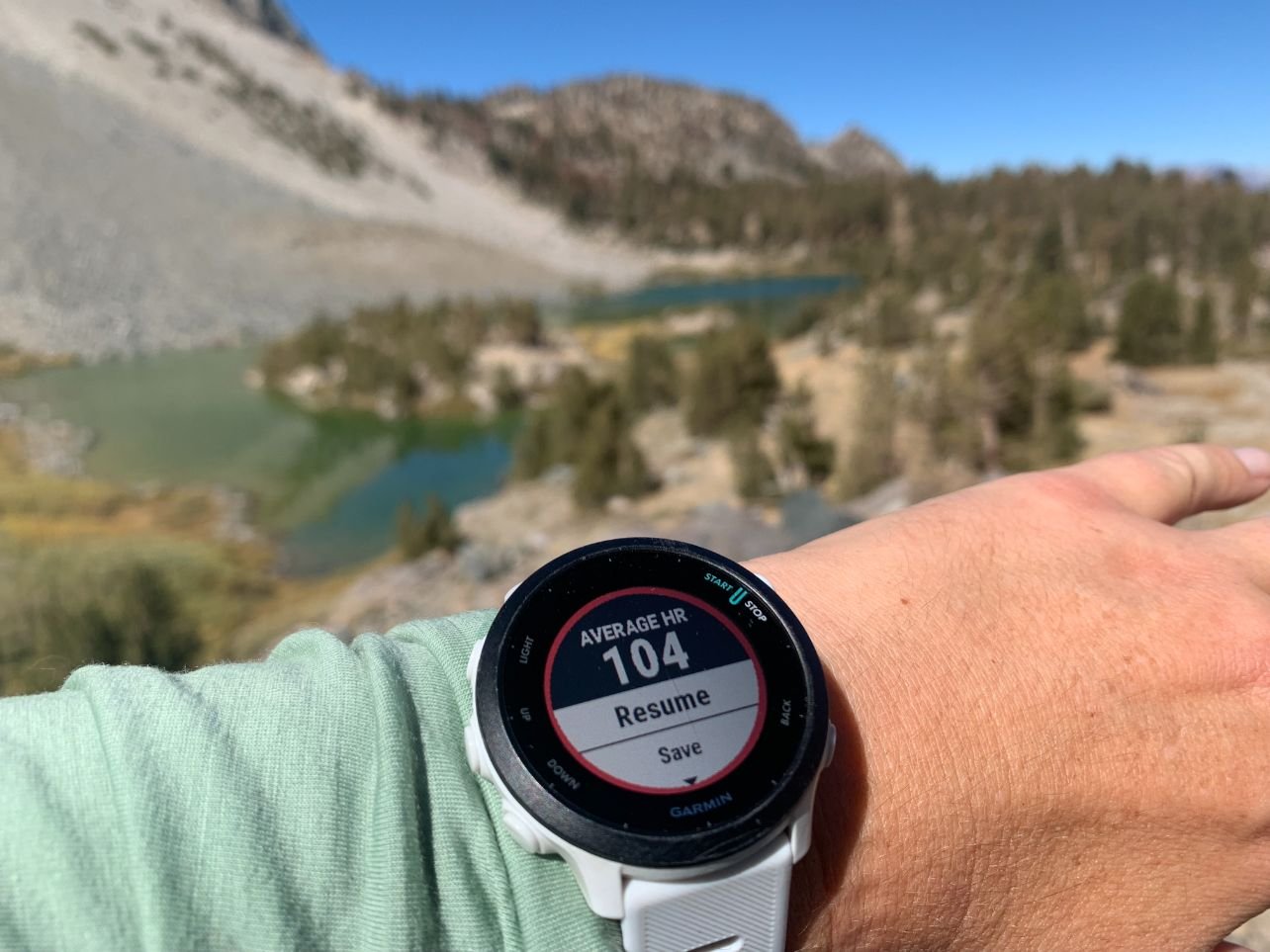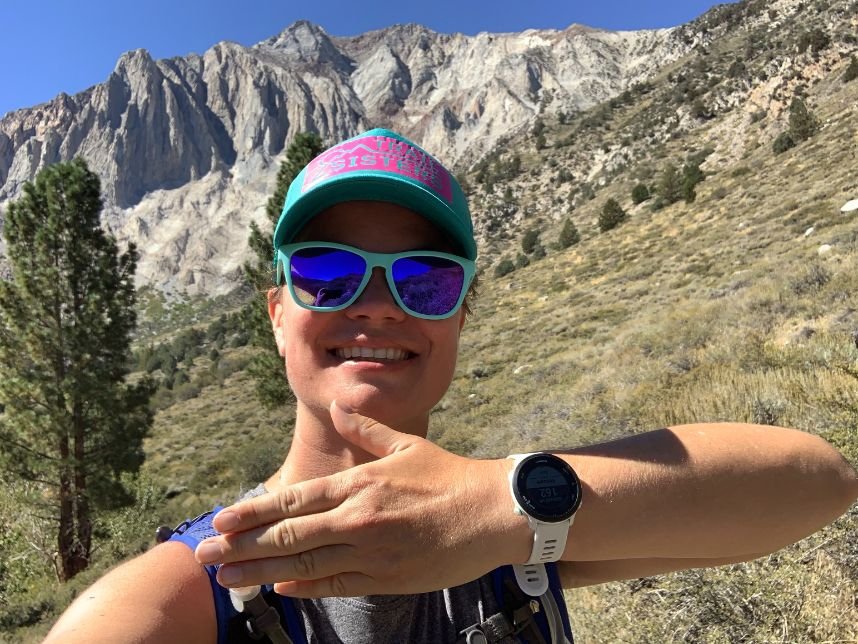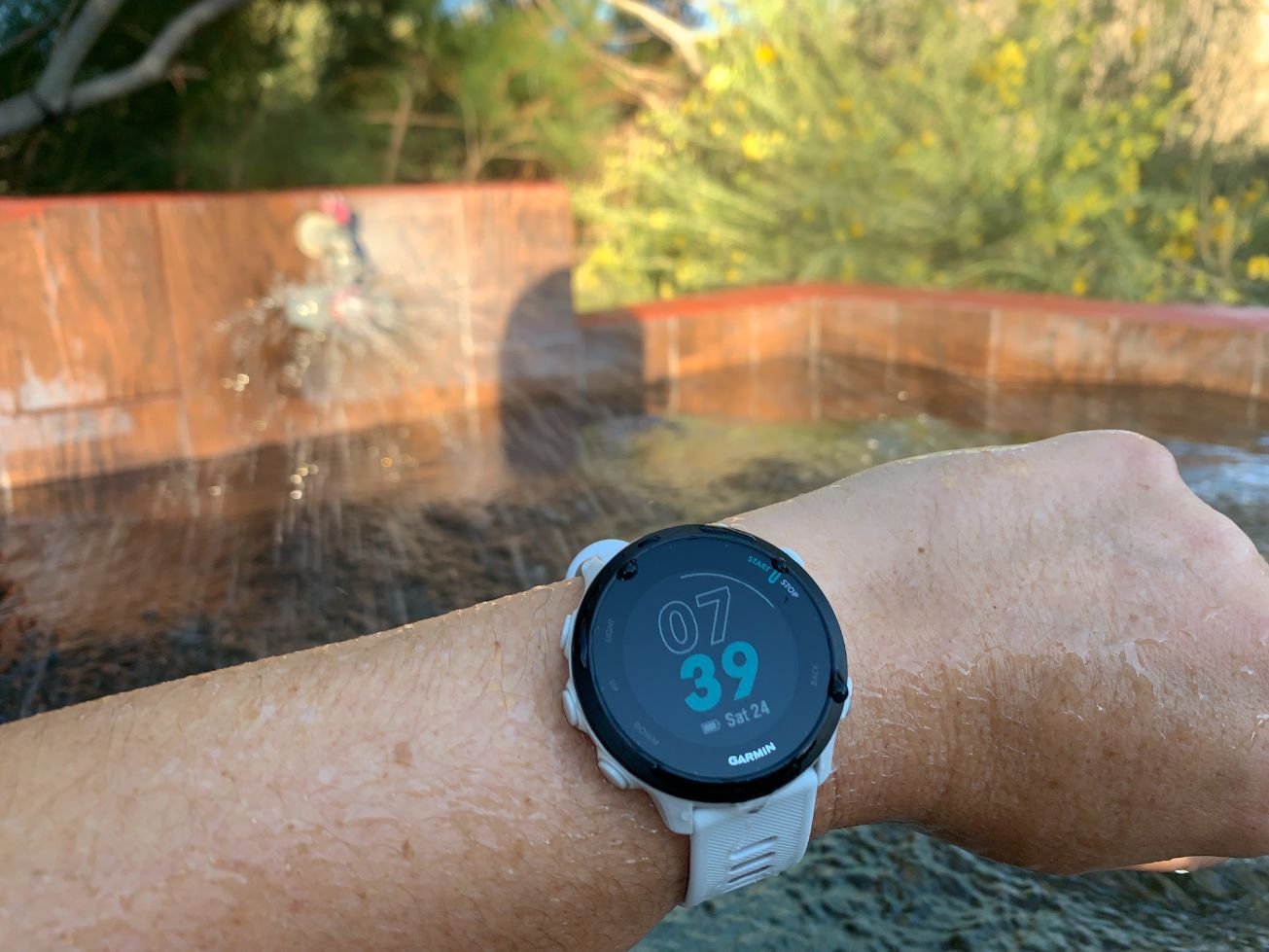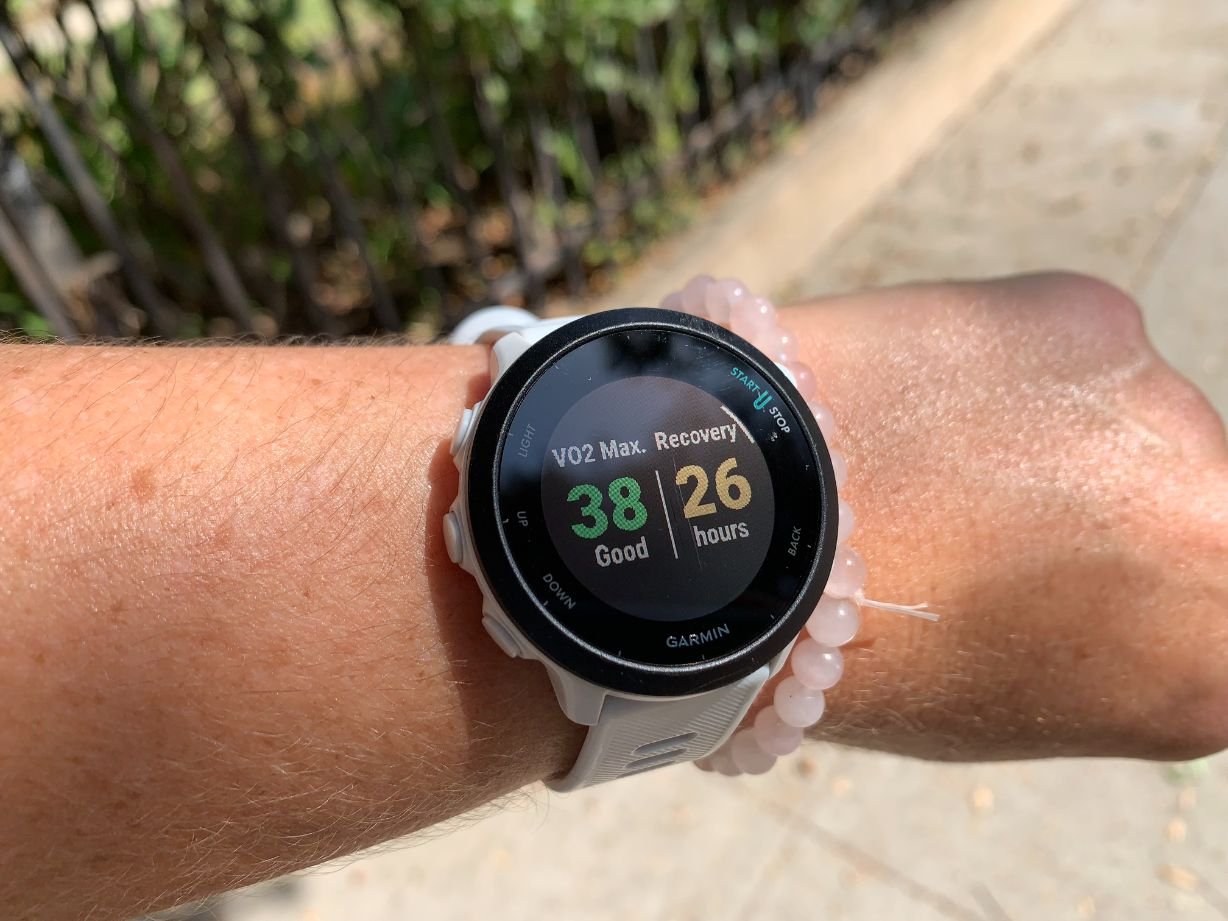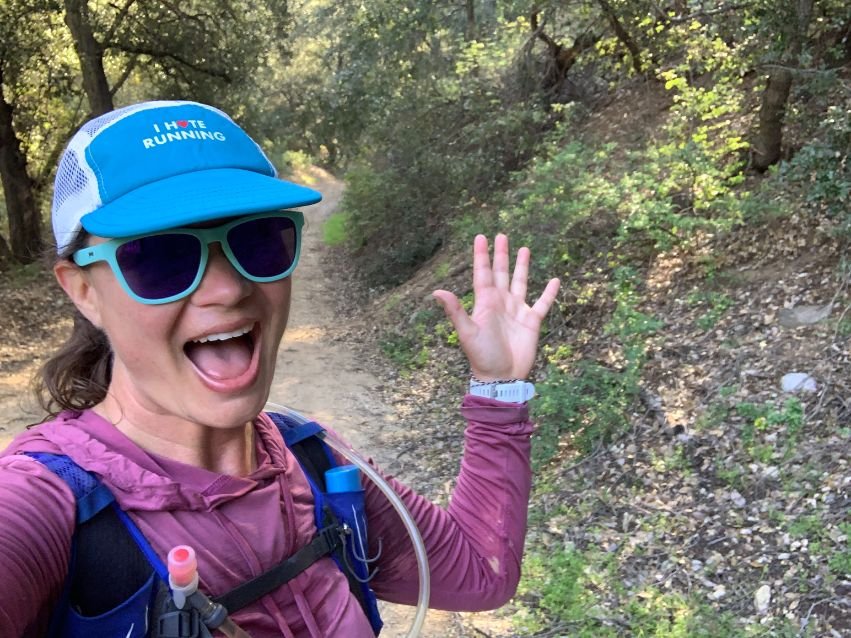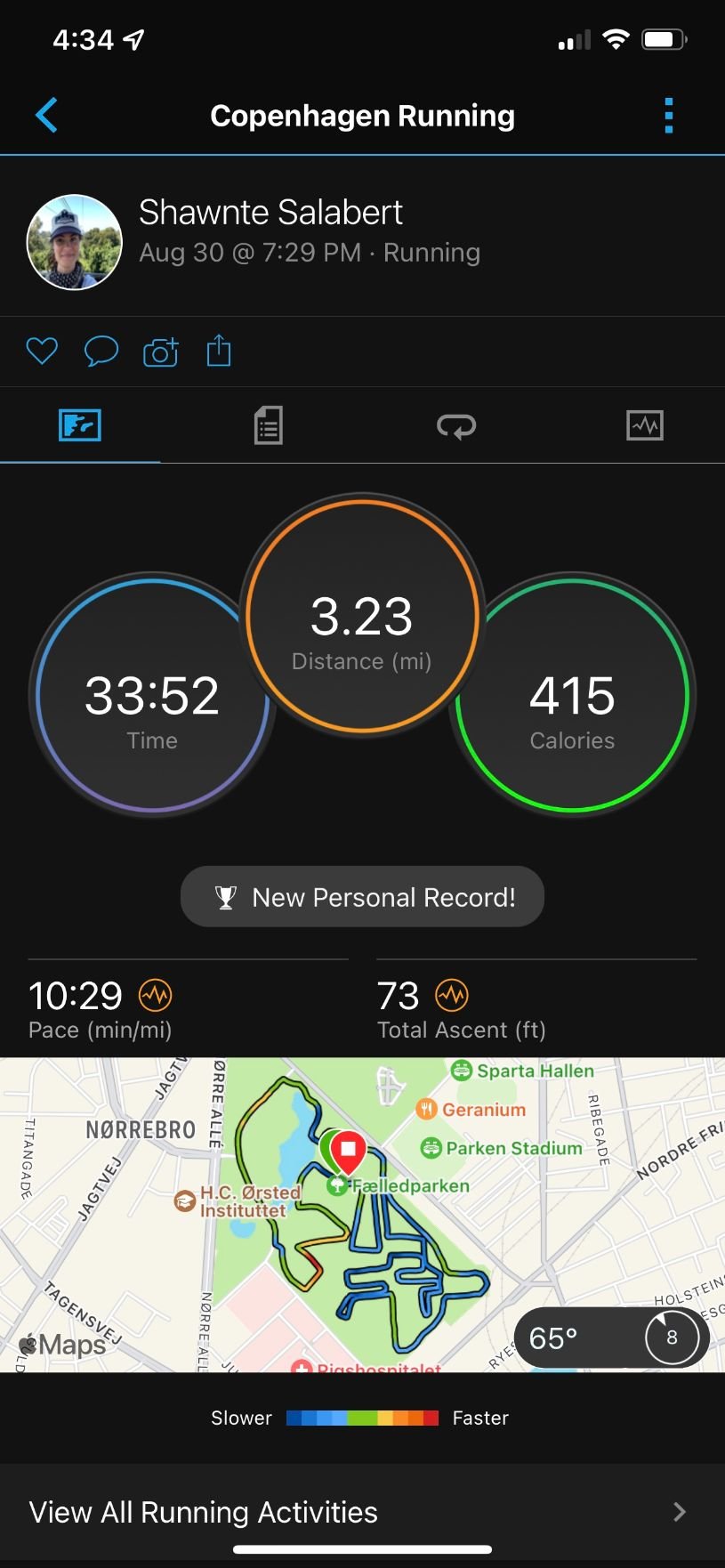Garmin Forerunner 55 GPS Watch Review
long-term review of The Entry-Level Running Watch That Converted This Technophobe
The Garmin Forerunner 55 is a Garmin GPS running watch with GPS run tracking, heart rate monitor, fitness tracker mode, and smartwatch mode capabilities.
August 26th, 2024, updated to include comparisons of similar running watches
Home > Gear Reviews > Electronics
About a year ago, my best friend Brooke was in the final stages of a move from L.A. to Denmark, hustling to sell or give away anything that wasn't worth lugging overseas. I’d already loaded up a carful of random items — a vacuum sealer, twinkle lights, a rather extensive liquor collection — from her overzealous husband when Brooke offered me an REI gift card. I looked at it in shock, then quickly shoved it in my wallet lest she change her mind.
Despite my bottomless gear bucket list, I immediately knew what I’d put the card toward — a running watch. The funny thing is that I hadn’t worn any timepieces since I was a kid. It’s not just that I use my phone to check the time but also that I’m an absolute technophobe and find most electronic gadgets, including watches with more than a single function, wildly intimidating.
After a prolonged, pandemic-induced running slump, however, I was ready to give fitness technology a second chance. As a solo runner, I act as my own coach and cheerleader, but having lost my mojo, I thought a little external motivation would serve me well.
Enter the Garmin Forerunner 55, the navigation juggernaut’s entry-level, GPS-enabled, running-specific smartwatch. A year and hundreds of miles later, this surprisingly simple but impressively high-functioning watch hasn’t just changed my running game — it changed my entire approach to physical wellness.
COMPARE PRICES OF THE GARMIN FORERUNNER GPS WATCH
We create reader-supported, objective gear reviews independently selected by our editors. This story may contain affiliate links, which help fund our website. When you click on the links to purchase gear, we may get a commission — without costing you an extra cent. Thank you for supporting our work and mission of outdoor coverage for every body! Learn more.
Garmin Forerunner 55 Specifications
Best use: running
Battery life: Smartwatch mode: up to 2 weeks; GP mode: up to 20 hours
GPS tracking: Yes
Smart watch notifications: Yes
Heart rate monitor: Yes
Fitness tracking: Yes
Waterproof: Yes, resistant up to 50 m
Altimeter: No
The author completed her first half marathon with the help of the Garmin Coach on her Garmin Forerunner running watch, which helps the runner set personal goals through suggested workouts at varied intensities.
WHY THE GARMIN FORERUNNER 55?
As a smartwatch noob, I went shopping with a few things in mind: I needed one that was affordable and easy to use. I wanted it to track my miles and offer simple feedback that could help me learn more about my body and fitness level. And I didn’t want it to look or feel obtrusive on my wrist, especially after spending my entire life blissfully watch-free.
The Garmin Forerunner 55 nailed all of those marks. I noticed it immediately — the watch’s price tag was the lowest ($199.99), and the profile the slimmest (with an adjustable silicone band and discrete buttons). The display was the least complicated (time, date, and battery life — although you can customize it to add more information).
I was also familiar with the brand, having used their handheld eTrex 20 GPS unit while conducting fieldwork for a guidebook (Amazon |Bookshop.org). I figured that if I could navigate the manuals and software used with that device, I could probably handle one of their watches.
So after scanning a brief list of the Garmin Forerunner 55’s basic functions, I snapped one up in white (it also comes in black and aqua), a slight bit of skepticism in tow. Could I really become someone who wears a tiny computer on their wrist?
The Garmin Forerunner 55 is easy to set up so that you can get out there and track runs.
how to do the easy set-up for the GARMIN FORERUNNER 55
My first clue that the Garmin Forerunner 55’s learning curve might be shorter than expected was its quick and painless setup. This consisted of turning on the watch, selecting my preferred language, then choosing “yes” when asked if I wanted to pair it with my smartphone. I’ll dig into the secret sauce of the free Garmin Connect App in a bit, but it’s worth taking a moment to download it onto your phone from the start.
It also didn’t take long for me to master the primary function of each of the watch’s five buttons:
· Top left: Screen light and controls menu (phone pairing, do not disturb, timer, stopwatch, emergency assistance, etc.)
· Middle left: “Up” navigation and settings (appearance, alarm clock, activities and apps, heart rate tracking, etc.)
· Bottom left: “Down” navigation and music controls
· Top right: Activity selection, start/stop
· Bottom right: “Back” navigation
I spent perhaps ten minutes total on setup and a quick rundown of button functions and felt reasonably confident that I could slap the Garmin Forerunner 55 on my wrist and head out for a run — so I did.
About ten minutes later, after warming up in the dusty parking lot of my favorite local route, I pressed the top right button, clicked it again to select “run” from the list of activities, then clicked it once more to begin tracking. Game on!
Interested in running? Check out the Running Gear section:
The Garmin Forerunner watch is fully waterproof.
How I use the Garmin Forerunner on runs
Mesmerized during that first outing, I kept glancing down to look at my watch, which created a sort of placebo effect that made me feel like a Real Fancy Runner. Just looking at stats and stuff. Checkin’ out my peak performance and all that.
Just kidding! I was actually just fascinated that my wrist suddenly offered real-time feedback on what the rest of my body was doing. While dragging my carcass around the trails, I toggled through four displays that showed the current time, my (very high) heart rate, pace/distance/elapsed time, and lap information.
Upon finishing, I tapped the stop button, saved my run data, and was rewarded with details of my total distance (decent), pace (not-so-decent), suggested recovery time (long), and estimated VO2 max (laughable).
In those early days of running watch-wearing, the Garmin Forerunner 55 simply allowed me to scratch the curiosity itch.
But as I began training for a half-marathon, the information I gleaned allowed me to adjust my effort level based on heart rate and track my progress — say, by watching my speed nudge up, along with my once pitiful VO2 max.
While I don’t tie my self-worth to pace or any other data points, it’s been amazing (and motivating) to receive feedback and see my training history that shows my hard work paying off from month to month.
An example of the VO2 max feature and recovery hour feature on the Garmin Forerunner.
Garmin Forerunner 55 FEATURES
Here’s what else this sucker does:
ACTIVITY DATA
Although the Garmin Forerunner 55 is marketed as a running watch, you can track run and receive data on a much wider array of activities, including cycling, swimming, walking, general cardio, and beyond. I was surprised to discover that I also liked tracking my yoga sessions. It may sound silly, but that tiny dopamine hit I received every time I heard the “start” beep on my watch helped me ease back into a daily habit.
BIOFEEDBACK
Beyond its simple GPS functionality, the Garmin Forerunner 55 offers various forms of biofeedback. I feel that most of these metrics are slightly more open to interpretation, however, than basic respiration and heart rate monitoring.
There’s a fitness age calculator (potential ego booster...or destroyer), a Body Battery monitor (gauges your daily energy expenditures), and an Intensity Minutes target (measures how much time you spend sweating through intense activity).
There’s also a stress tracker, which notifies me at least once a day that I need to chill out (ahem — rude). Instead of just passing judgment, though, it also recommends exercises that might help lower my heart and respiratory rate.
Interested in running? Check out the Running Gear section:
The race predictor mode takes run tracking and your fitness history into account to calculate finish times for various distances.
CUSTOMIZABILITY
Even in its relatively simple suite of functions, there’s a lot you can personalize on the Garmin Forerunner 55, from the face display to the setup of various Garmin watch menus, with even more options available via Garmin’s online Connect IQ Store.
In addition, various widgets offer a variety of options, from checking the weather feature to tracking your water intake and menstrual cycle to playing music from your phone. (Although, as a friend so gently put it, I am “quite possibly a serial killer” because I do not listen to music when I run, so I haven’t yet tested this particular function).
The feature I use most, however, is setting alerts for metrics like heart rate and cadence (the number of steps you average in a minute while running) so that my watch makes a sound when I am outside of my self-selected ranges.
For instance, I’m currently several months deep into a round of heart rate training, trying to keep it at an aerobic level during my “easy” runs to build endurance. So, I use the heart rate alert to indicate when I should slow down without having to spend an entire run developing a crick in my neck from staring at my wrist.
For more, read our review of the Garmin Instinct 2.
The author running with the Garmin Forerunner watch in Angeles National Forest
WHAT I LIKED
If using a smart watch counts as game-ifying exercise, then count me in as a running gamer — I was hooked on the Garmin Forerunner 55 within a week of unboxing that sucker. Here’s why:
VALUE
Retailing for about $200, this isn’t a cheap watch, but it’s affordable for a smartwatch; add the free Garmin Connect app (more on that shortly, I promise), and the value multiplies. In contrast, the Apple Watch SE, the most affordable in the Apple watch series, starts around $250.
EASE OF USE
A large, easy-to-read screen and five buttons that lead to intuitive menus made the Garmin Forerunner 55 a quick study for even a technophobe like myself.
BATTERY LIFE
The specs boast about twenty hours of battery life when used to track activities via GPS mode and up to two weeks of power in basic smartwatch mode (just like most modern devices, you can receive texts and other phone notifications on the watch). While I haven’t pushed either of these time limits to the max, I haven’t had any problem using the watch in GPS-enabled track mode for weeklong trips on and off-trail. It usually charges within an hour for me.
The Garmin Forerunner comes with a silicone band that is adjustable.
DURABILITY
I am a klutz of the highest order, and despite banging my watch against any number of inanimate objects and natural materials, the watch face has but a single scratch (it was a rock, and I hit it hard after tripping on air during a run). The wristband is fully intact and looks nearly brand new after a year of daily wear. Thankfully, the whole thing is also waterproof. Although it’s not built for deep dives, I’ve worn it for an extended time in many a hot spring and frigid alpine lake without any issues.
FIT
The soft silicone band is lightweight, minimal, and fully adjustable, fitting wrists with a circumference of up to 203mm (just shy of 8 inches for the metric-averse). However, you can change out the strap material as long as the replacement is a 20mm quick-release band
Interested in running? Check out the Running section:
A screenshot of a tracked run.
GARMIN CONNECT APP AND GARMIN COACH
Remember that app I mentioned earlier? I use it daily. Yes, you can scroll through the watch screens to check your data. Yes, you can sync your Garmin Forerunner 55 to Strava. But the Garmin Connect app has transformed my watch into a portable running coach and helped me notch my first trail half.
Going back to the Pavlovian joy of getting instant feedback on my workout, I enjoy seeing all of the data presented in a slightly larger format on my phone screen, which I usually spend a few minutes tooling through after each run. The first time I did this, however, I noticed that the app included a section labeled “Garmin Coach.” Clicking on this feature single-handedly changed my running game.
Garmin Coach is a free program that allows you to choose from three race-ready distances (5k, 10k, and half marathon), set fitness goals (completion or a specific finish time), and then select from three different virtual coaches. The app drums up a training plan based on your target race date with some additional info like goal finish time.
I was shocked at the depth of the “coaching” on offer — informational videos, exercise demos, and, most importantly, a progressive weekly run schedule that mixes up the suggested workout based on how you handle each week’s load.
The author wearing the Garmin Forerunner 55 above 10,000 feet in the Sierra Nevada. One thing that would make the Forerunner 55 better is a barometric altimeter.
WHAT COULD BE BETTER
Honestly, it feels nitpicky to name any faults with the Garmin Forerunner 55 since it’s aimed at serving the beginner or casual user, and it nails that role. But here are a few aspects that might one day convince me to spring for a slightly pricier and more fully featured Garmin smartwatch such as the Garmin Instinct 3 or the Garmin fenix (to compare: you can read our review of the Instinct 3, fenix 7, and fenix 8).
ALTIMETER
I knew before buying that this didn’t have a barometric sensor and that I’d need to scale up to one of Garmin’s fancier options to get an altimeter. Still, I do a lot of off-trail travel, and, man, it would be nice to have that data reference on this running watch.
MORE TRAINING
As someone considering moving into marathons, I am disappointed that the included training options end at half distance.
DATA DISCREPANCIES
Perhaps my biggest issue is with data accuracy, and I suppose this is why more motivated athletes and pros bump up to more advanced smartwatches. The heart rate monitor is sometimes wildly inaccurate, especially at the beginning of a workout, showing my rate as something close to snoozing while standing up when I’m actually moving (and panting) at a good clip. This is a common issue with wrist-based sensors like the Garmin Elevate, however, which is why some runners wear a chest strap heart monitor to get more accurate intel.
There’s also a pretty wild discrepancy in stats like steps taken and elevation gain compared to my Strava app and iPhone monitoring. At times, even the mileage is a little off, something I notice when doing a regular loop where I expect the audible beep of mile notifications at specific locations. Again, this isn’t a make-or-break for me as a (very) amateur runner, but more elite or competitive athletes might find it frustrating.
Related: Coros Apex 2 In-depth Review
The author completed her 5k race in Copenhangen with a personal best time with help from the Garmin coach trainer, suggested workouts, and extra motivation from her watch.
BOTTOM LINE
Earlier this fall, I visited Brooke in Denmark, watch in tow. Because of a slight scheduling snafu, the first thing I did after landing bleary-eyed in Copenhagen was suit up for the DHL Stafetten, an enormous and wildly popular relay race where teams from companies around the country race in groups of five, with each participant running a complete 5k.
Considering I’d spent an entire day traveling (and very little of that day sleeping or eating), I hadn’t planned on running very fast; my goal was simply to finish and pass the baton to the next runner without, say, collapsing.
But then...I glanced at my watch, my trusty coach who guided me to complete my inaugural trail half (complete with a burly 3,200’ elevation change). The digital amiga that teaches me about my body, champions my efforts, and encourages me to keep aiming for the stars. I thought, what if I tried to run as fast as possible?
And so I did. Buoyed in part by the very speedy Danes surrounding me and partly by the desire to finish as quickly as possible to rest my absolutely delirious bones, I ran my tail off. At one point, I looked down at my watch and saw a significant, almost alarming pace, one faster than I’d ever run. It didn’t last for long, of course, because my lungs were on fire and my body felt as though it might disintegrate at any moment, but I did notch a 5k personal best that evening, and that’s something.
As someone with a deep aversion to allowing technology to complicate my time outdoors, I never could have imagined how my Garmin Forerunner 55 would instead impact my life in such a positive way. I’m a consistent runner — and yogi — because of all the little ways it motivates me to get out there and do something good for myself. And that’s the kind of “personal best” I can genuinely get behind.
Where to buy
The Garmin Forerunner 55 are popular, so you have options when it comes to retailers. Here are some of the pros of the retailers.
REI
Pros: 100% satisfaction policy for 90 days on electronics; 10% dividend for members.
Amazon
Pros: Free 2-day shipping with Amazon Prime membership
Backcountry
Pros: Frequent sales for Expedition Perks members (free to join), fast shipping, Gearhead chat customer service is excellent
Other Watches to Consider
You can read our full comparative review of hiking watches here. However, here are some quick suggestions:
Garmin Instinct 3
The Garmin Instinct 3 Solar is the best GPS hiking and backpacking watch for most people in our Best Hiking and Backpacking Watches guide. The Instinct 3 Solar combines the essential ABC (altimeter, barometer, and compass) functions, smartwatch features, and excellent battery life in a durable watch. However, it is more of a hiking watch than a running watch. It is also more expensive than the Garmin Forerunner 55. We think most runners will prefer the benefits of the Forerunner 55. You can read our long-term review of the Garmin Instinct 3 here.
Garmin fenix 8 series
The Garmin fenix 8 series has full mapping capabilities, a color screen, music storage, and access to the Garmin IQ Connect app store for complete customization. It is more expensive than the Forerunner 55 and also has many more capabilities, as it is not running specialized.
The number of watches available in the fenix 8 series is overwhelming, so see our review of the Garmin fenix 8 series for more information.
In our experience, folks new to GPS watches will prefer the Forerunner 55 over the fenix 8 because it is easier to use.
Garmin Enduro 3
If you're an endurance athlete who regularly spends large amounts of time away from a charging source, you may prefer something with long battery life, like the Garmin Enduro 3.
The Enduro 3's battery life is an astonishing 150 hours in GPS mode, making it a better choice for ultra running, triathlons, Fastest Known Times (FKTs), and thru-hiking in general.
As with the fenix, in our experience, folks new to GPS watches will prefer the Forerunner 55 over the Enduro 3 because it is easier to use and more affordable.
about the author
Shawnté Salabert is a California-based freelance writer interested in the connections between humans and the natural world. Her work has appeared in Adventure Journal, AFAR, Alpinist, Backpacker, The California Sunday Magazine, Condé Nast Traveler, Land+People, Outside, and SIERRA, among other outlets.
She is the author of Hiking The Pacific Crest Trail: Southern California (Amazon | Bookshop.org). For more information, visit shawntesalabert.com.
You can read all of Shawnté’s Treeline Review stories on her author page.

